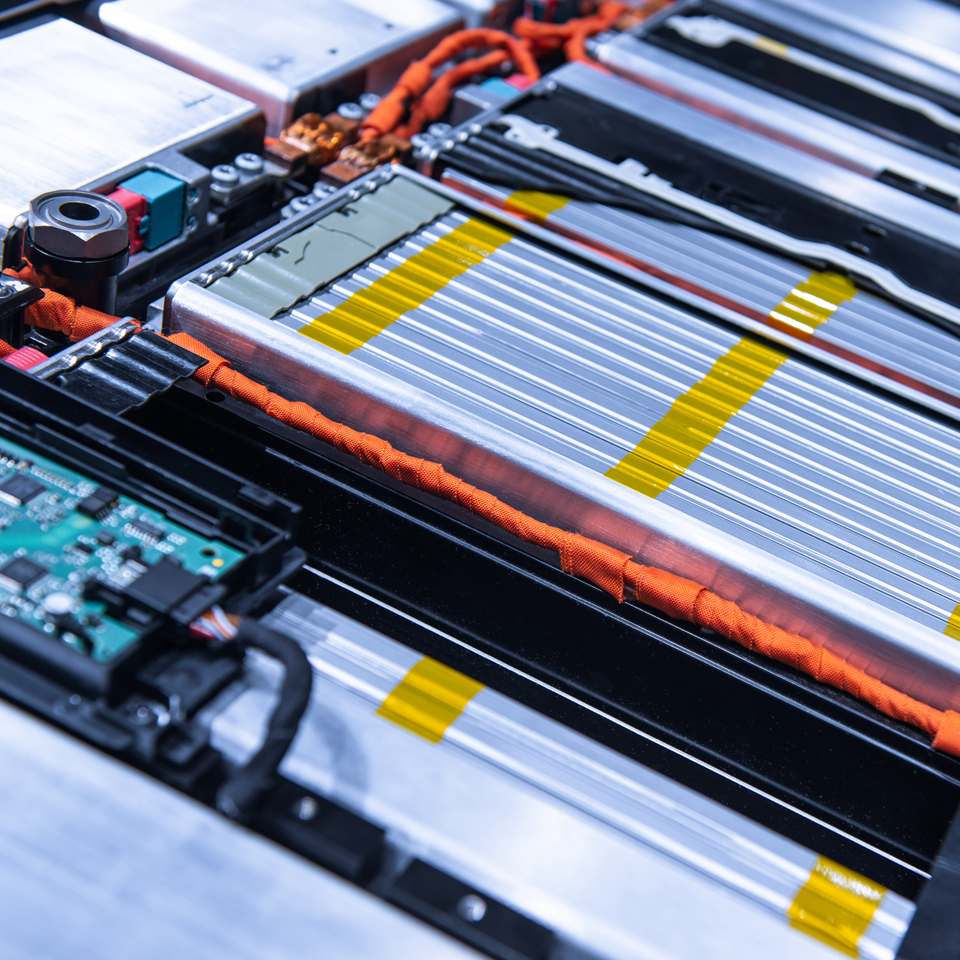Dr Pooja Goddard
Senior Lecturer and Royal Society Industry Fellowship – Chemistry
Dr Pooja Goddard in an expert in the computational modelling of fundamental processes in complex materials at the atomic and quantum scale, combining inter-ionic potential-based methods and density functional theory simulations. Her work has applications across sustainable energy technologies – next generation energy storage systems, thin film photovoltaics, and fuel cell materials – as well as radiation resistant nuclear materials.
The chemistry of sustainable energy
Advances in sustainably generated, stored and distributed electricity are enhancing efficiency, reducing costs and paving the route to net zero power. Progress is driven by our growing knowledge in the field of materials science. Understanding and exploiting the characteristics of materials used in technologies like batteries and solar panels – including lithium / sodium ceramics, cadmium telluride, apatites, perovskites and high entropy alloys – are key to decarbonisation within the energy sector.
My expertise in computational modelling could have taken me in many scientific directions, but working in the field of sustainable energy is really rewarding. Feeling that my time “in the office” is helping to realise the green energy transition is fantastic.
At the moment, my investigations span a range of technologies in optimising performance energy storage materials and thin film solar materials; understanding radiation resistance in high-entropy alloys for nuclear energy applications; and developing new defect chemistries for the next generation of fuel cell materials.
For example, silicon-based solar panels dominate the current market, but they’re expensive to manufacture and have a high carbon footprint. As part of a transdisciplinary team – including CREST – I’m exploring the potential of cadmium telluride (CdTe) as a cheaper, greener and more efficient alternative.
Treating CdTe with chlorine really boosts its efficiency, but for a long time we weren’t sure why. Our quantum mechanical modelling has provided the answer. Next, we’re going to see how further improvements can be made by enhancing other parts of the solar cell such as the front and back contacts, that allow the current to pass through.

Meanwhile, in partnership with Cambridge-based company, Echion Technologies, I’m supporting developments to optimise lithium batteries and create next generation – fast charging, high power energy storage.
It was very exciting to be approached by Echion who had read our research team’s paper and wanted to draw on our expertise, via a Knowledge Transfer Partnership. Applying our know-how to a specific industry challenge is a great opportunity to accelerate R&D in this area.
I also received the prestigious Royal Society Industry Fellowship which is allowing me to spend half of my time working with Echion Technologies alongside the knowledge transfer partnership.
This is a fabulous opportunity for me to see how industry – especially a start-up – works and what the challenges are for developing and commercialising the next generation of materials for energy storage.
Recognition and acceptance empower people to believe they can achieve the unimaginable.

Each gain in efficiency across sustainable energy generation and storage means that green technologies are becoming more competitive – bringing our hopes for a net zero future ever closer.
Alongside my research, I’m also a social justice advocate and take on some key challenges as the Director of EDI for the School of Science. Having a diverse workforce is important if we want to be successful, and it starts right from primary school through undergraduate and postgraduate studies.
This is where my work with the Royal Society of Chemistry Inclusion and Diversity Committee is very important. I truly believe inclusivity is about recognising the importance of every individual in shaping the success of an institution. Recognition and acceptance empower people to believe they can achieve the unimaginable.
We must work hard every day to ensure this is happening in our teams, in our institutes – and in our lives.
My research journey
I grew up in the foothills of Mount Kenya, so I’ve come a long way – figuratively and literally – and am really enjoying the ride.
I came to the UK in 1998 as an undergraduate to study engineering and quickly realised I was a better scientist.
A natural born problem solver, when I decided to switch from engineering, Chemistry (my strongest A-Level subject) seemed an obvious choice. It’s always fascinated me as its applications are so wide ranging and, sitting between Physics and Biology, it’s cross-disciplinary which I love.
I studied at Coventry University and achieved a First in my MChem, with an industrial placement at GlaxoSmithKline.
Next, I moved to the University of Warwick to pursue my PhD. I was fortunate to secure funding from Cabot Speciality Fluids and the Warwick Postgraduate Scholarship to support my research – “Computational and Experimental Studies of Formate Brines”, the dense but viscose liquids used in oil drilling applications.
Not my first topic of choice, but my international status meant that projects were limited. Still, the computational methods I learnt during my PhD are very relevant to my current research, so I have no regrets.
In 2005, I relocated to Sweden – joining the Department of Physics and Materials Science at Uppsala University. I was part of an EU team developing a novel, non-invasive test for malaria, where I was tasked with understanding the fundamental physics in haem (a key component of blood) when it was infected.
My next stop was the University of Bath – marking the start of my interest in sustainable technologies. I worked as an EPSRC Research Officer conducting computational studies of energy materials with applications spanning Li Ion batteries, fuel cells, and thin film PV materials.
In 2012, I ventured the furthest north (in the UK, at least) so far – taking up the post of Senior Research Fellow at the University of Huddersfield – before settling here in Loughborough in 2015, and securing promotion to Senior Lecturer in 2018.
